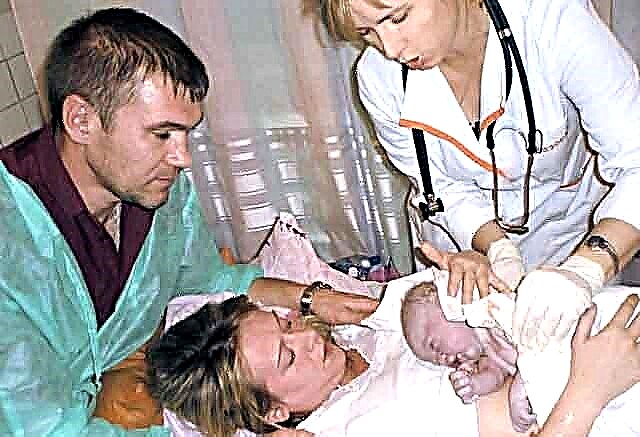Lactose is very important for the normal health and development of children. It provides about 40% of a child's energy needs, assists in the absorption of calcium and iron, inhibits pathogenic bacteria in the intestines, and plays an important role in the development of the central nervous system. And lactose is the main sugar found in milk and dairy products. Lactase is an enzyme that is essential for the digestion of lactose. That is why lactase deficiency in children raises many questions from their parents. After all, the staple foods of babies somehow contain this sugar.
The mechanism of development of lactase deficiency
Lactose is a disaccharide, a sugar made up of two simple molecules - glucose and galactose. For this sugar to be absorbed, it must be broken down into simple components by the enzyme lactase. This enzyme "lives" in the folds of the mucous membrane of the small intestine.
In children with lactase deficiency, the body cannot produce enough lactase, which means there is no way to digest and absorb the sugar found in milk and milk derivatives.
Because this sugar cannot be digested properly, it is exposed to the normal bacterial flora in the colon. This process of exposure, called fermentation, leads to symptoms that indicate a child's lactase deficiency.
What is lactase deficiency?
There are two types of lactase deficiency.

Various factors cause a lactase deficiency underlying each type.
- primary lactase deficiency - This is an unusually rare diagnosis when babies from birth have an absolute absence of the enzyme lactase. Primary lactase deficiency in newborns manifests itself in the form of severe diarrhea when feeding with breast milk or conventional formula, which requires the selection of a special diet. It is a genetic disorder inherited in a recessive way of inheritance. For symptoms of lactase deficiency to develop, the child must receive one disease gene from each parent;
- secondary lactase deficiency Is a temporary intolerance. Since the enzyme lactase is produced in the villi of the small intestine, anything that damages the lining can cause secondary lactase deficiency. Even minor damage to the mucosa can erase these villi and reduce enzyme production. At the same time, children experience diarrhea when consuming lactose-containing foods, as well as nausea and vomiting. Rotavirus and giardiasis are two infections associated with temporary lactase deficiency. However, any other viral and bacterial gastroenteritis can cause lactase deficiency.
Celiac disease is a disease of the digestive system that causes damage to the small intestine when gluten (plant protein) is taken, causing a temporary lactase deficiency. Children with celiac disease can only eat lactose-containing foods when the intestinal lining heals after following a strict gluten-free diet.
Crohn's disease, an inflammatory bowel disorder, also causes lactase deficiency. If the disease is adequately treated, then the condition improves after that.
Cow's milk protein allergy is often confused with lactase deficiency, and many people think it is the same. This is not the case. The confusion arises because milk protein and lactose are found together, that is, both are found in dairy products. Since cow's milk allergies or intolerances can cause secondary lactase deficiency, the two can combine to create more confusion.
Lactose overload can be similar to and is often mistaken for lactase deficiency. This phenomenon is observed in infants who consume large amounts of breast milk when the mother has it in excess. The baby has more than 10 urinations per day, repeated bowel movements during the day and large weight gain. Possibly green, loose stools, as in the case of lactase deficiency. This usually occurs in babies under 3 months of age.
Ironically, the mother thinks she has a low milk supply because the baby seems to be constantly hungry. There is a vicious circle here. Large volumes of low-fat milk (foremilk) pass through the baby's intestines so quickly that not all lactose is digested.
Lactose, which reaches the lower intestine, draws additional water into the intestinal lumen and is fermented by bacteria there, causing gas and acidic stool.
 The dissolution of gas and liquid provokes abdominal pain, and the child behaves as if hungry (wants to suck, is upset, pulls his legs, screams).
The dissolution of gas and liquid provokes abdominal pain, and the child behaves as if hungry (wants to suck, is upset, pulls his legs, screams).
Since the mother thinks the baby is hungry again, she gives the breast. After all, sometimes this is the only way to calm the baby.
Unfortunately, additional feeding speeds up peristalsis and leads to even greater accumulation of gas and liquid.
Many mothers whose babies have had this problem are advised to change the feeding procedure.
This is usually only needed for a short time. The goal is to slow down the rate at which milk is delivered to the infant by “feeding” one breast to feed or by “block feeding”.
To block feeding, set a 4 hour breast change period, and use the same breast each time the baby wants to feed during this period. Then use the other breast for the next 4 hours and so on. Each time the baby returns to an already started breast, he receives less milk with higher levels of fat.
This helps slow down the digestive system. During block feeding, make sure the other breast is not overcrowded. When the baby's symptoms disappear, the mother can return to normal breastfeeding and feed as needed.
Symptoms
Fermentation of lactose in the large intestine by the intestinal flora leads to the formation of carbon dioxide and hydrogen, as well as some foods that have a laxative effect.
Five symptoms you should look out for:
- loose stools and gas;
- liquid diarrhea with gas;
- bloating, flatulence, nausea;
- skin rash and frequent colds;
- stomach pain and cramps.
Signs of lactase deficiency can be similar to those of other conditions and depend on the amount of lactose consumed. The more lactose a child consumes, the more severe the symptoms will be.
Aside from the symptoms and discomfort associated with this condition, lactase deficiency in children is not a threatening disorder with long-term complications - it simply involves an altered lifestyle.
Diagnosis of lactase deficiency
If your child has symptoms of lactase deficiency, the doctor will recommend switching to a lactose-free diet to see if the symptoms go away. If the symptoms go away, the child is lactase deficient.

A stool sample is taken to confirm the diagnosis. High levels of acetate and other fatty acids in the stool are signs of lactase deficiency.
Treatment
The specific treatment for lactase deficiency will be determined by the doctor based:
- the child's age, general health and medical history;
- the degree of the disease;
- the child's tolerance for specific drugs, therapies, or procedures.
Although there is no cure to improve the body's ability to produce lactase, symptoms caused by a deficiency of this enzyme are controlled through diet. Additionally, over-the-counter lactase enzymes may be suggested by your doctor.
If you want to avoid dairy and other lactose-containing foods, read the labels on the foods you buy. Some seemingly safe foods - processed meats, baked goods, breakfast cereals, pastries - contain milk. Check food labels on products such as whey, cottage cheese, milk by-products, powdered milk, and skim milk.
By law, products containing dairy ingredients (or other common allergens) must be clearly identified as such. This should make your task easier.
Watch how your child reacts. Some children with lactase deficiency can digest some milk, while others are very sensitive to even minimal amounts.
For example, some cheeses have lower lactose content than others, so they are easier to digest. And live culture of yogurt is generally easier to digest than milk because the healthy bacteria in fermented milk products help the body produce lactase.

Avoiding breastfeeding of infants in favor of a lactose-free formula is not a solution. The solution for a secondary lactase deficient infant is not to stop breastfeeding or switch to a lactose-free formula.
These formulas should only be recommended if the baby is already bottle-fed or has concerns about his growth. The way out is to find out what caused the secondary lactase deficiency and deal with it. Breast milk will help your intestines heal.
Therefore, if there is a factor that irritates the intestines, breastfeeding is recommended to continue. When the cause of the deficiency is identified and corrected, the intestines heal and the deficiency disappears.
For example, if the cause of secondary lactase deficiency in exclusive breastfeeding is an allergy to cow's milk protein and the mother eliminates it from her diet, the baby's symptoms disappear.
A lactose-free formula may relieve symptoms, but it won't actually heal the gut because the lactose-free formula still contains cow's milk protein. In severe cases, a highly hydrated special mixture is prescribed.
If the child is very sensitive, all sources of lactose should be eliminated from the diet. If not, you can give him a small amount of selected dairy products. It will be easier to carry them if the baby eats such food with other foods.
Make sure your child's nutritional needs are met. If you find that you need to completely eliminate dairy products in your child's diet, you need to make sure that the baby has other sources of calcium that help his bones and teeth grow stronger. Non-dairy sources of calcium: sesame seeds, leafy greens, fortified juices, soy milk and cheese, broccoli, salmon, sardines, oranges.
Other nutrients to worry about are vitamins A and D, riboflavin, and phosphorus. Lactose-free dairy products are now available in many grocery stores. They contain all the nutrients of regular dairy products.
Lactase deficiency has been recognized as a common problem in many children around the world. Although it is rarely life-threatening, the symptoms of lactase deficiency lead to significant discomfort and a decrease in the quality of life. Treatment is relatively simple and aims to reduce or eliminate the provoking substance.
This can be done by eliminating lactose from the diet or pretreating with the enzyme lactose. Calcium should be provided with alternative non-dairy diet foods or taken as a dietary supplement.



